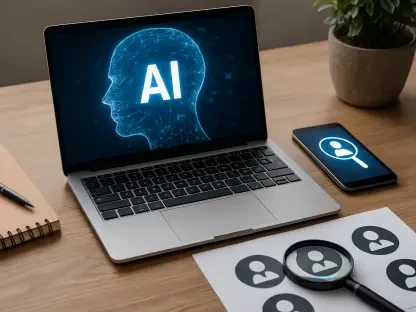In today’s fast-paced work environment, nearly 70% of employees report feeling overwhelmed by fragmented tools and disconnected systems that disrupt focus and hinder productivity, painting a clear picture of a modern workplace challenge. This guide offers a step-by-step approach to leveraging Interact’s newly launched AI-powered Employee Experience (EX) Platform, a solution designed to address these pain points head-on. By integrating cutting-edge agentic AI and seamless system connectors, this platform promises to revolutionize connectivity, enhance culture, and deliver actionable insights for HR, internal communications, and management teams.
The purpose of this guide is to equip organizational leaders and decision-makers with the tools to simplify workplace technology and boost employee satisfaction. It focuses on the practical implementation of Interact’s innovative features, ensuring that the benefits of reduced context-switching and enhanced data-driven decision-making are within reach. By following this roadmap, companies can bridge the gap between operational efficiency and human-centric outcomes, creating an environment where employees thrive.
This guide will help readers achieve a cohesive, efficient workplace by adopting a platform that consolidates tools, uncovers hidden insights, and amplifies appreciation. It provides actionable steps to integrate AI-driven solutions into daily operations, addressing both the technical and cultural needs of modern organizations. Whether managing a dispersed workforce or seeking to improve internal communications, this resource outlines a clear path to success.
Understanding the Need for a Unified Employee Experience Solution
Before diving into the implementation process, it’s critical to grasp why fragmented workplace tools pose such a significant barrier to productivity. Employees often juggle multiple systems for HR tasks, IT support, and internal communications, leading to inefficiencies and frustration. Interact’s platform emerges as a response to this growing demand for integration, aligning with industry trends toward smarter, user-focused technology that prioritizes ease of use.
The impact of disconnected systems extends beyond mere inconvenience, often burying valuable insights within scattered data. This creates a ripple effect, slowing organizational progress and diminishing employee focus. By recognizing these challenges, leaders can better appreciate the value of a unified intranet that streamlines access to resources and fosters a more connected workforce.
Moreover, the shift toward integrated systems reflects a broader movement in HR and IT to reduce complexity. Companies adopting such solutions report improved employee engagement and faster resolution of operational issues. This context sets the stage for exploring how Interact’s platform can address these pain points with precision and innovation.
Step-by-Step Guide to Implementing Interact’s AI-Powered Platform
Step 1: Integrate Microsoft Copilot Connector for Seamless Workflow Access
Begin by deploying the Microsoft Copilot Connector, a powerful feature resulting from Interact’s partnership with Microsoft Cloud AI. This tool allows employees to access intranet content directly within Microsoft 365 Copilot, ensuring secure, permission-aware responses without disrupting their daily tasks. Start by coordinating with IT teams to set up the connector, ensuring compatibility with existing systems.
Once integrated, this feature significantly reduces context-switching by embedding critical resources into familiar tools. Employees can retrieve information without navigating away from their current workspace, maintaining focus and saving time. A practical tip is to conduct initial training sessions to familiarize staff with this functionality, highlighting its role in simplifying access to company policies or updates.
Monitor adoption rates and gather feedback to fine-tune the setup. Ensuring that permissions are correctly configured is essential to protect sensitive data while providing relevant answers. This step lays the foundation for a more fluid workflow, addressing one of the core inefficiencies in modern workplaces.
Step 2: Leverage HR and IT Integrations with SAP and ServiceNow
Next, focus on integrating HR and IT self-service tools through connections with SAP SuccessFactors and ServiceNow. This feature brings functionalities like checking PTO balances or submitting IT tickets directly into the intranet, eliminating the need for multiple logins. Collaborate with HR and IT departments to map out key processes that can be streamlined through this integration.
The consolidation of these tasks into a single platform saves significant time for employees, reducing reliance on disparate systems. For instance, staff can resolve routine queries without contacting support teams, freeing up resources for more complex issues. A useful tip is to prioritize high-frequency tasks during the initial rollout to maximize immediate impact.
Regularly assess the effectiveness of these integrations by tracking usage metrics and employee satisfaction. Adjustments may be necessary to ensure seamless operation across departments. This step enhances operational efficiency, empowering staff to manage routine needs with minimal friction.
Step 3: Activate the Signal Agent for Real-Time Insights
Implement the Signal Agent, an always-on AI tool designed to analyze internal communications for sentiment shifts, trending topics, and potential risks. This feature delivers detailed alerts to relevant teams like HR and IT, enabling proactive management of emerging issues. Start by defining key areas of focus, such as employee morale or compliance concerns, to tailor the agent’s monitoring scope.
The Signal Agent tackles the challenge of sifting through enterprise data noise, turning raw information into actionable insights. Leaders can address concerns before they escalate, relying on real-time data rather than outdated surveys. A helpful tip is to establish clear protocols for responding to alerts, ensuring timely action without overwhelming teams.
Evaluate the agent’s impact by reviewing the accuracy and relevance of its notifications over time. Fine-tuning its parameters may be required to align with organizational priorities. This step transforms data into a strategic asset, equipping leaders with the foresight needed to maintain a healthy workplace environment.
Step 4: Utilize the Recognition Agent to Boost Workplace Culture
Finally, activate the Recognition Agent to identify moments of praise within internal communications and route them to managers with full context. This tool plays a vital role in fostering a culture of appreciation, especially for frontline workers who may otherwise go unnoticed. Begin by setting up the agent to scan relevant channels and notify appropriate personnel.
Timely recognition has a profound effect on morale and retention, reinforcing positive behaviors across the organization. Early adopters, such as Love’s Travel Stops, have reported significant improvements in employee engagement through this feature. A practical suggestion is to pair automated recognition with personalized follow-ups from managers to enhance its impact.
Track the frequency and outcomes of recognition instances to gauge the tool’s effectiveness in building a positive culture. Adjustments can be made to ensure that all deserving contributions are captured. This final step strengthens interpersonal connections, aligning cultural values with everyday interactions.
Key Takeaways from Implementing Interact’s Platform
Reflecting on the journey of integrating Interact’s AI-powered platform, the steps taken delivered a transformative impact on workplace efficiency and culture. The Microsoft Copilot Connector streamlined access to resources, while SAP and ServiceNow integrations simplified HR and IT tasks. Meanwhile, the Signal Agent provided critical insights, and the Recognition Agent uplifted morale through timely appreciation.
Looking ahead, organizations that embraced this guide found a scalable solution to fragmented systems, paving the way for sustained improvement. A next step could involve exploring deeper AI customizations or additional integrations to address evolving needs. Continuously engaging with employees to understand their experiences ensured that the platform remained aligned with real-world challenges.
As a final consideration, staying attuned to emerging trends in HR technology proved invaluable for maintaining a competitive edge. Experimenting with new features or seeking feedback from other adopters offered fresh perspectives on maximizing the platform’s potential. These actions solidified the foundation for a connected, empowered workforce ready to tackle future demands.









